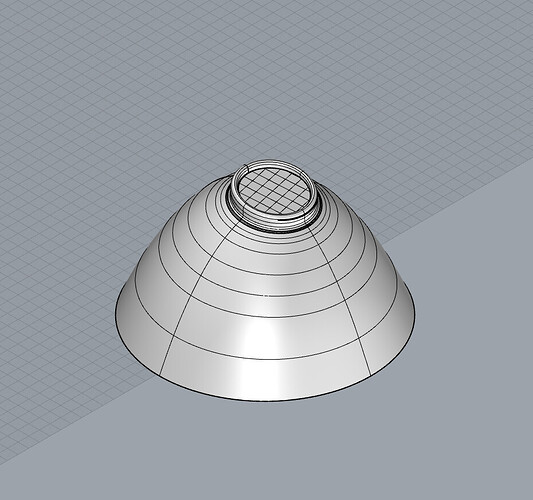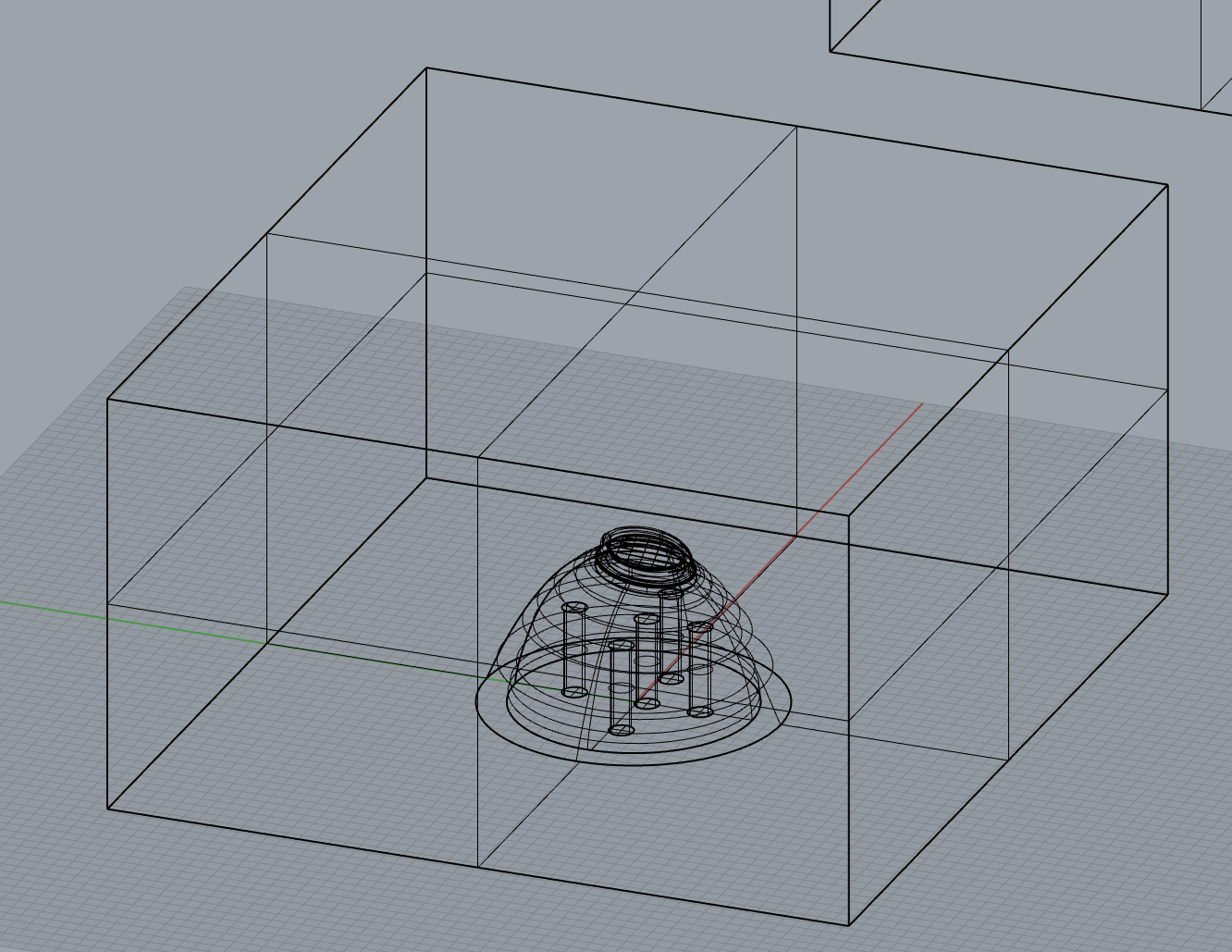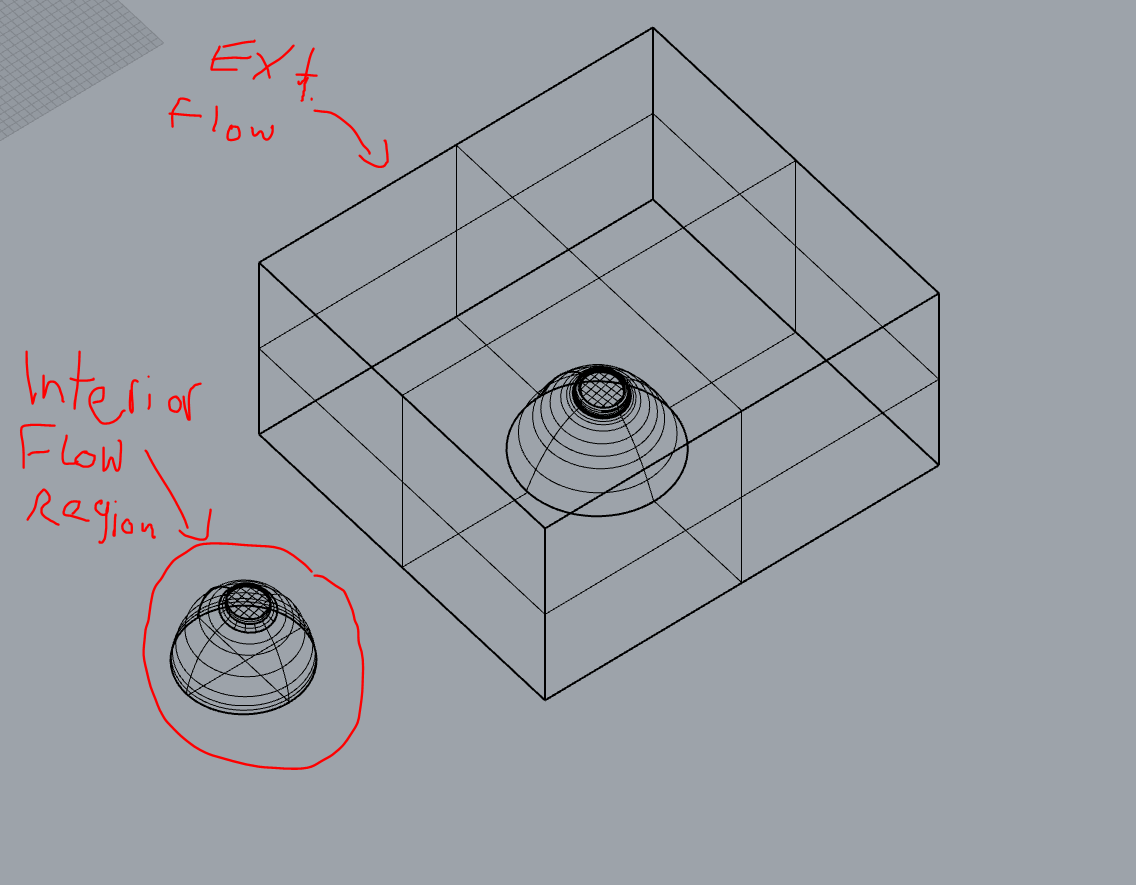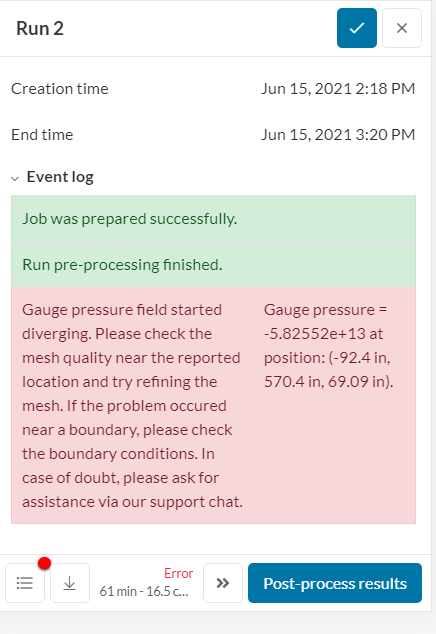I am having trouble creating a single flow region for my model. I created my model in Rhino and because my model is fully enclosed, when I subtract my hut from a solid block, the form creates 2 separate solids. If you look into my model “cdf file v5b” you will see how the interior and exterior models are separate from one another. Is there a way i can connect these solids into a single flow region in simscale? Is there a way to do it in rhino? The purpose of this test is to see the effects of the internal heat gain with five occupants without having any windows or forms of ventilation.
Hi there, are there any openings on the hut? Can you send me a screenshot please?
Best regards,
Fillia
No openings. That is why I am getting 2 separate models when Boolean differencing the model into a solid block.
Here is my model
Here is my model Boolean differenced in a block to create the flow region
I see, the two flow regions should be connected with an opening, otherwise you will not be able to run the project. The only analysis type that can simulate more than one flow region (that are not in contact) is the Conjugate Heat transfer. For this, the hut will remain in the model. Have a look at this tutorial for example, to see how this analysis type works: Conjugate Heat Transfer in U-Tube Heat Exchanger | SimScale
Hmm, I dont want airflow to get inside of the model though… The purpose of the simulation is test the internal temperature of the hut without ventilation. If I connect the outside flow region to the interior, wont simscale simulate air entering into the hut?
Exactly, so it might be better that you use the Conjugate Heat Transfer then, that allows having two separate flow regions 
Ok I will try this out.
I am using this study to compare it to a similar study model that has windows in it. This study is linked here as reference.
Forum:
Model:
This model is a convective heat transfer simulation that simulates internal temperature from occupants and how air ventilates through inlets/outlets via moving and still air.
Will a Conjugate Heat Transfer model be similar to the previous simulation I set up? I want the simulations to be similar so I can test the differing internal heat with/without windows.
Also my pervious model was based off this tutorial:
Looking at the Conjugate Heat Transfer Tutorial it seems quite different in the initial set up phase. Am I able to use the same attributes I used on the thermal comfort tutorial?
Hi,
The main differences between conjugate and convective heat transfers are:
- Conjugate heat transfer allows multiple flow regions
- Conjugate heat transfer requires you to add the solid parts as well (so here we want to have the solid walls).
- For conjugate heat transfer analyses, you will only be able to define boundary conditions to the actual boundaries of the systems. Defining boundary conditions to interfaces between solid and fluids is not allowed. So you would not be able to define a wall boundary condition to the occupant.
In any case, unless you are interested in having the temperature profiles within the hut walls, I don’t think you will benefit much from a conjugate heat transfer analysis.
So is there any way I can just test the internal heat temperature from the occupants without having open windows?
Yes, by closing all the openings (and running a simulation only with the internal flow region).
You’d have to specify some heat dissipation mechanism, probably from the outer walls of the domain. The setup would be similar to the office room simulation.
So I would only import the model I circled in rhino?
And what part of the office room tutorial goes over heat dissipation?
Correct, it would only take the internal flow region.
The typical boundary condition would be similar to section 2.3.d from the tutorial (of course with different temperatures).
So what do I set the inlets and outlets to? Do I select Natural convection inlet/outlet and select the flow region?
For creating the wall type do I set it as internal wall or external wall ( when referencing 2.3: A/D)
And the purpose of this exercise is to test the internal temperature of the hut so changing the temperature of the flow region will drastically alter my results. Why should I change the temperature compared to the previous test? What data should I have to know how to set up the temperature correctly?
I’m not the best person to answer these questions, since I don’t know exactly what your objectives and what exactly are the physics with this analysis.
In short, ask yourself “what are the physics of my simulation? Do I have inlets or outlets? What is the temperature outside?”, etc, and try to capture these conditions with boundary conditions.
PS: Looking for similar projects in the public projects section helps ![]()
I am experiencing this error message when running a simulation. Would you happen to know why I am receiving this?
Hello,
Have you already checked this article, on this topic? It contains the usual troubleshooting steps.
Cheers



